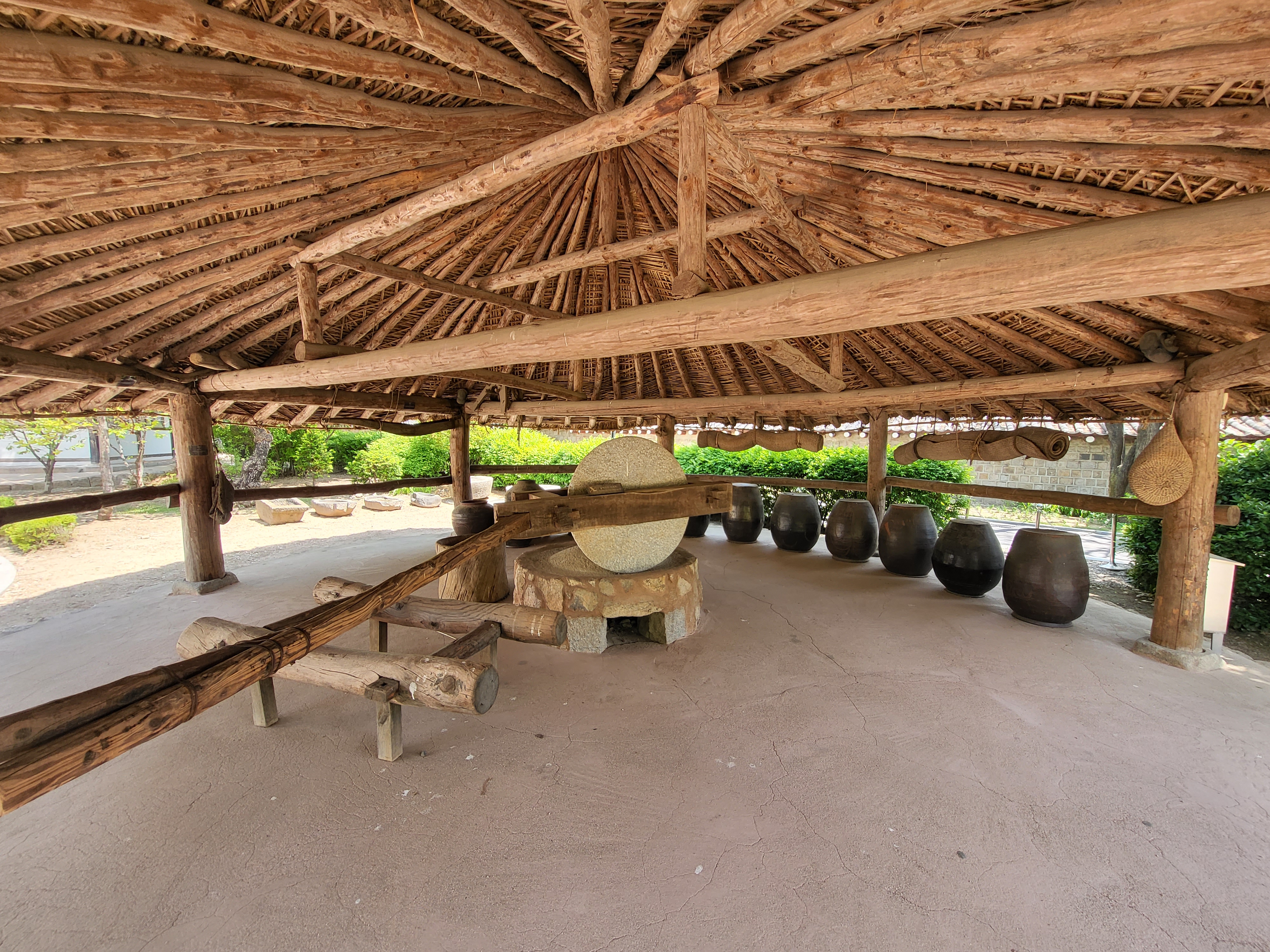National Museum of Korea. Seoul
국립민속박물관
Rotary grinding mills were driven by an ox or horse and used to millgrain.
Rotary mils, where the upper mill stone ran horizontaly on the base stone through the power of work animals, were much more efficient than hand mils with mortars and pestles, which utilized pressing and rotating motions.


During the grinding, one person held reins ofthe ox or horse puling the mill stone, and another person fed and turned the crops with a wooden shovel.
Building a rotary grinding mill required much money so villagers usually built and used them collectively. Such mills almost completely disappeared with the introduction of mechanical mills.


평평한 원형의 돌판 위에 둥근 돌을 얹어 이것을 소나 말로 돌려 곡식을 질는 기구로, '연자매, '돌방아, 돌방애'라고도 한다.
손으로 윗돌을 돌려 곡식을 가는 맷돌과는 달리, 연자방아는 가축의
힘에 의해 윗돌과 아랫돌이 수직을 이뤄 돌아가기 때문에, 맷돌에 비해 일의 능률이 휠씬 높다.
곡식을 빵을 때는 한 사람이 소나 말의 고삐를 잡고 앞에서 몰아 윗돌을 돌리고, 다른 한 사람이 뒤를 따르며 넓적한 나무 판에 긴 자루를 단 도구인 넉가래(넓적한 나무판에 긴 자루를 단 도구)로 곡식을 밀고 뒤집어 준다.
연자방아를 만들려면 비용이 많이 들기 때문에, 마을 사람들이 공동으로 장만해 함께 사용했는데, 기계식 방앗간이 들어오면서 거의
사용하지 않게 되었다.
'NEWS & THESIS > Photo News' 카테고리의 다른 글
| 매발톱? 닭발? 할매 벙거지? (0) | 2023.05.09 |
|---|---|
| Peonies after flowers fall (0) | 2023.05.08 |
| Phallic symbols in Korea (0) | 2023.05.06 |
| 여름으로 가는 길목을 만개하는 작약 (0) | 2023.05.05 |
| 대성당? 레스토랑? 신심은 먹는 데서 (0) | 2023.05.05 |




댓글